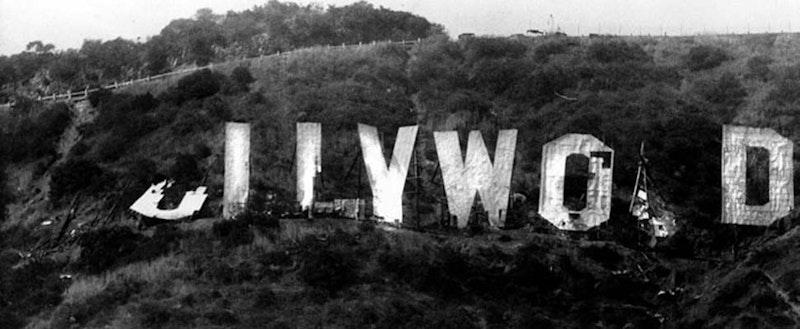Hollywood’s been dying for as long as I’ve been alive, and for various reasons. In the 1970s Hollywood was making movies people didn’t want to see. Then in the 1980s, and ever since, it’s been making movies too many people did want to see, starting with Jaws and Star Wars and moving on through Terminators and Transformers and superheroes.
Ben Fritz’s recent book The Big Picture takes the attitude of the hair-pullers, arguing that changes in the business of movie-making are pushing Hollywood into a worse place, and resulting in worse movies. One might disagree with the thesis, but if the book’s prose is unremarkable, the wealth of information makes it a valuable read.
Fritz examines the changes in Hollywood’s business over the past 10 years, mostly through the lens of increasingly-troubled Sony Pictures, using the hacked emails released on the Internet in 2014 as a source to demonstrate the thinking of top executives over the few years preceding. His argument is that Sony represents an older way of making and thinking about films, a moviemaking business based around putting out a lot of mid-budget movies with as many A-list actors as possible, and hoping by the end of the year the hits will outweigh the misses. He ably documents the rise of a different approach, mostly championed by Disney, in which fewer but bigger movies are released, and actors are less important than franchises.
For Fritz, the decline of the prestige dramas he describes, in tandem with the rise of superhero blockbusters, is a problem. I’m less convinced. He mourns a Hollywood that routinely produced films like Moneyball or Saving Private Ryan; I’d argue they aren’t particularly worth mourning. I’m skeptical that Hollywood has produced anywhere near as many masterpieces as independent American filmmakers or foreign studios, and I think Fritz desperately needed a chapter to make the case that the system that elevated Adam Sandler to the role of major star deserves to be saved.
The Big Picture is structurally solid otherwise. He’s writing about movies, but this is a business story, so events like the collapse of the DVD market, the 2008 financial crisis and the rise of the Chinese economy all shape the events he has to describe. His prose is plain, and the copy-editing’s terrible. His research is mostly excellent (though there’s a howler early on when he dates the Satanic Verses controversy to the late-1990s). Notably, there’s a preface in which he discusses his mixed feelings about using the emails from the Sony hack, and states that he intends to avoid “salacious or shocking” material. Which sounds fine, but rings false when one chapter opens with a discussion of an email sent by an executive undergoing a mammogram.
Otherwise Fritz does a good job of integrating the story of Sony’s decline with the rise of Marvel, Netflix, and Amazon. But I think he undermines his central point. He shows Netflix and Amazon supporting dramas much like the ones he claims are disappearing. In fact, both companies seem to support even more daring visions than was typical in traditional Hollywood. He’s correctly describing a change in the way movies get made, but frames the book as though recounting an existential threat to filmmaking as a whole.
It’s true that Amazon and Netflix are primarily concerned with the home market, not theatrical display, and there’s a good argument that the current model of theatrical distribution will face considerable challenges in the coming years. But then this returns us to Marvel and the blockbuster films: why pay contemporary ticket prices to watch a movie of everyday life that may or may not gain from the big screen? If you have to pay top dollar to see a film today, doesn’t it make more sense to pay for a special-effects spectacular that requires a big screen for maximum visual impact? And aren’t theaters at least a little complicit in shaping this choice, as they add IMAX screenings and vibrating seats and more and more bells and whistles, driving up the ticket price with every bit of frippery?
Again, the question of how movies are best viewed is an interesting one, and the question of what happens to movie theaters in the not-so-distant future is an interesting one, but the analysis is underplayed. Fritz argues that movies like Get Out create a “culture-shifting event” unlike anything Netflix generates, but in what way is that cultural moment different from the one produced by Stranger Things? And of what genuine value is that kind of mass cultural response, anyway? There are arguments to be made about all of these things, but Fritz skates past them.
Like Hollywood as a whole, The Big Picture presents itself as concerned with art while actually focusing on the financials, and papers over that disjunction with cheap nostalgia about “the movies.” The book’s therefore lacking for those of us who don’t see movie stars as royalty, and don’t view Hollywood studios as “one of the great American achievements of the twentieth century,” or simply have no deep affection for middlebrow films. As an examination of the business of modern movie-making, though, The Big Picture’s solid enough. Are movies on the edge of a precipice? There’ve always been voices claiming that movies were going to hell, along with the novel, radio, pop music, classical music, comics, and every art form that isn’t TV (which really resides in hell to start with). However unintentionally, The Big Picture actually describes an art form in unusually robust health.

